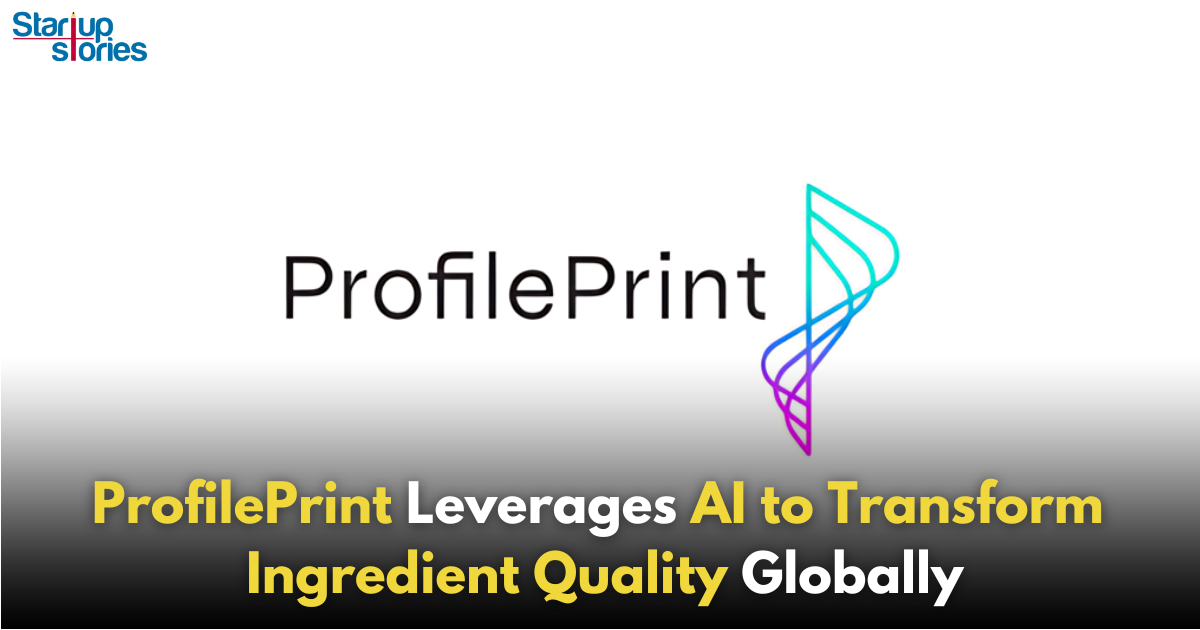As the world’s population continues to grow, so does the demand for food production. However, balancing this need with sustainability and quality control remains a significant challenge. A Singapore-based startup, ProfilePrint, is tackling this issue with its innovative technology aimed at revolutionizing the way agribusinesses assess ingredient quality.
Digital Fingerprints: A New Approach to Ingredient Quality
ProfilePrint has developed a patented digital fingerprint technology that enables rapid and accurate ingredient analysis, saving time and reducing costs for agribusinesses. By using machine learning and molecular-level analysis, ProfilePrint’s technology captures and digitalizes the unique “fingerprint” of food ingredients, allowing producers and traders to make informed decisions without the need for physical sampling.
CEO Insights
Alan Lai, CEO and founder of ProfilePrint, explains that the current ingredient trade system relies heavily on sending physical samples back and forth across the supply chain, which increases both cost and carbon footprint. “ProfilePrint digitalizes food ingredients, so buyers and sellers no longer need to ship samples physically, significantly reducing logistics costs and environmental impact,” Lai says.
How ProfilePrint’s AI-Powered Technology Works
ProfilePrint’s platform allows companies to create custom AI models to assess raw ingredients for specific quality criteria, such as appearance, taste, and molecular composition. Using its platform, companies can quickly determine if an ingredient meets their requirements or if it contains any defects that might impact the product’s final quality.
Demonstration of Capabilities
In a demonstration, Lai showed how ProfilePrint’s technology can detect even minor defects in coffee beans—such as beans that have been improperly fermented or damaged by insects—by analyzing them at a molecular level and instantly providing a quality assessment. “The molecules are captured and converted into a digital fingerprint that contains detailed information about the ingredient,” he explains. Within seconds, the AI system processes the data to provide a quality rating or pricing suggestion.
Expanding Applications and Global Reach
Beyond coffee and tea, ProfilePrint envisions broad applications for its technology in food quality control and security. By offering insights into flavor profiles, pricing, and quality trade-offs, the platform empowers clients to make data-driven purchasing decisions.
Growth Journey
Founded in 2017, ProfilePrint has grown from Lai’s experiences observing farmers in Uganda and China, where limited resources often led to low selling prices despite high product quality. Today, the startup operates globally with deployments in over 60 locations across six continents. Its digital nature allows clients worldwide to access the service remotely, providing a scalable solution for agribusinesses of all sizes.
Backed by Visionary Investors
ProfilePrint’s potential has attracted investors like Yukihiro Maru, founder of Leave a Nest Capital in Japan. Maru sees ProfilePrint as an example of how AI can transform the agribusiness industry, especially in emerging markets. “ProfilePrint can adapt its technology beyond coffee and tea, moving into the food security space,” he said at the Singapore Week of Innovation and Technology (SWITCH) conference.
Industry Context
ProfilePrint is part of a growing sector of AI-driven startups focused on food quality and ingredient analysis. U.S.-based companies like Aromyx and Brightseed also use AI to optimize flavor and health benefits in food and supplements. However, with its unique digital fingerprinting approach, ProfilePrint is poised to make significant inroads into the global market by providing fast, cost-effective solutions to improve ingredient quality control and efficiency.
Commitment to Sustainability
Beyond enhancing operational efficiency, ProfilePrint’s technology promotes sustainability by providing traceability features that allow end buyers to access digital signatures and geographical records of their ingredients. This transparency helps ensure fair compensation for farmers based on quality while fostering trust in the supply chain.
Conclusion
As demand for quality food production continues to rise, ProfilePrint’s innovative technology offers a promising path forward by combining AI with practical solutions for global agribusinesses to meet quality standards sustainably and efficiently. The startup’s approach not only addresses immediate challenges in ingredient assessment but also sets the stage for future advancements in food safety and quality assurance across diverse markets.
With ongoing developments in AI technology, ProfilePrint is well-positioned to lead the charge in transforming how food ingredients are evaluated globally while contributing positively to both producers’ livelihoods and consumer safety.


binance us register
March 28, 2025 at 11:26 am
Thanks for sharing. I read many of your blog posts, cool, your blog is very good.
Registrasi Binance
August 27, 2025 at 2:47 pm
Your article helped me a lot, is there any more related content? Thanks! https://www.binance.info/kz/register-person?ref=RQUR4BEO
create a binance account
October 3, 2025 at 10:27 am
Thank you for your sharing. I am worried that I lack creative ideas. It is your article that makes me full of hope. Thank you. But, I have a question, can you help me? https://www.binance.info/join?ref=P9L9FQKY
谷歌站群
November 6, 2025 at 9:30 pm
专业构建与管理谷歌站群网络,助力品牌实现全域流量的强势增长。谷歌站群
Kuwin
November 7, 2025 at 4:41 am
kuwin sở hữu kho game đa dạng từ slot đến trò chơi bài đổi thưởng, mang đến cho bạn những giây phút giải trí tuyệt vời.
MM88
November 7, 2025 at 8:19 am
Khám phá thế giới giải trí trực tuyến đỉnh cao tại MM88, nơi mang đến những trải nghiệm cá cược thể thao và casino sống động.
谷歌蜘蛛池
November 9, 2025 at 8:26 am
利用强大的谷歌蜘蛛池技术,大幅提升网站收录效率与页面抓取频率。谷歌蜘蛛池
iwin
November 9, 2025 at 9:40 pm
iwin – nền tảng game bài đổi thưởng uy tín, nơi bạn có thể thử vận may và tận hưởng nhiều tựa game hấp
MM88
November 16, 2025 at 12:23 am
Với giao diện mượt mà và ưu đãi hấp dẫn, MM88 là lựa chọn lý tưởng cho các tín đồ giải trí trực tuyến.